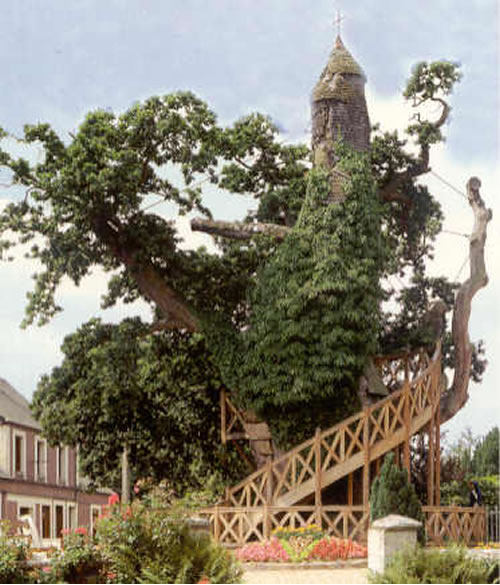
 |
|
|
|---|
| Most trees begin life as a seed. The young tree that develops from this seed is called a seedling. After a tree reaches a height of 6 feet (1.8 meters) or more and its trunk becomes 1 to 2 inches (2.5 to 5 centimeters) thick, it is called a sapling. Many trees reach a height of more than 100 feet (30 meters). Some old trees have trunks more than 10 feet (3 meters) in diameter. |

|
|---|
How seeds sprout into trees. A seed contains parts that develop into the trunk and roots of a tree. It also has one or more cotyledons and a supply of plant food. After a seed has left the parent tree, it rests for a while on the ground. Water, air, and sunshine help the seed germinate (begin to grow). The part of the seed that develops into the trunk points upward toward the sunlight. As the seed absorbs water, the root part swells and bursts through the seed's shell. As the root grows, it pushes down into the soil. The food stored in the seed nourishes the tree. As the root begins to soak up water from the soil, the trunk begins to develop leaves.
How leaves make plant food. As a leaf develops, it gets sap from the roots. It also absorbs carbon dioxide from the air. The leaf uses the energy of sunlight to change the sap and carbon dioxide into sugar, a process called photosynthesis. The sugar provides food for the trunk, branches, and roots. During photosynthesis, the leaves also produce oxygen and release it into the atmosphere.
 |
|---|
How trees grow taller. Trees grow taller only at the tips of their trunk and branches. Each year, the tips of the trunk and of each branch develop a bud. The bud contains a tiny leafy green stem called a shoot. The bud is wrapped in a protective covering of bud scales. After a period of rest, the buds swell and open. The shoots that were inside the buds begin to grow and so make the trunk and branches taller. Another type of bud grows on the sides of the trunk and branches. These buds contain a shoot that develops into a leaf-bearing twig after the bud opens. As a twig grows larger, it becomes another branch of the tree. Some tree buds develop into flowers.
Still others develop into twigs that bear both leaves and flowers. In warm climates, trees produce buds frequently during the year or continue to grow without forming buds. In colder climates, trees produce buds only in the summer. These buds rest in winter and open after warm weather arrives in spring. |
|---|
Contributor: Richard H. Waring, Ph.D., Professor Emeritus of Forest Ecology, Oregon State University. |
|
|||||||||||||
|---|---|---|---|---|---|---|---|---|---|---|---|---|---|
|
|
|||||||||||||